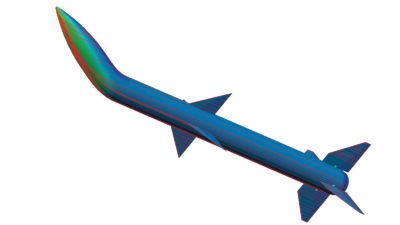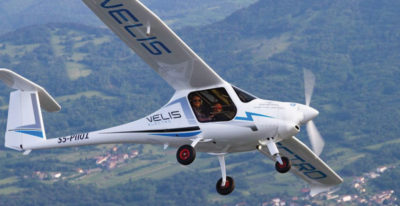Insights made about imaging radicals, predicting soot yields and detonations
By TIMOTHY OMBRELLO AND CLARESTA DENNIS|December 2020
The Propellants and Combustion Technical Committee works to advance the knowledge and effective use of propellants and combustion systems for military, civil and commercial aerospace systems.
Researchers at the Optical Diagnostics and Imaging Laboratory at Texas A&M University this year demonstrated a femtosecond (fs), laser-based scheme for imaging multiple chemical species using a single laser source. By using 308-nanometer, 100-fs broadband laser pulses, the researchers recorded laser-induced fluorescence images of atomic hydrogen and the hydroxyl radical simultaneously in flames. Proceedings of the Combustion Institute published the details of that work in September. Similarly, in a Combustion and Flame article, which appeared in April, the same group demonstrated simultaneous imaging of carbon monoxide and hydroxyl radical using fs laser pulses of 283 nm. High signal-to-noise imaging measurements were also obtained using a custom-designed and fabricated robust, tunable laser system that is approximately six times more efficient compared to commercial optical parametric amplifier systems for generating fs pulses of 283 nm. Simultaneous spatially and temporally resolved imaging of these chemical species in flames provides significant insights into the chemical and transport processes involved in flames, leading to improved chemical kinetic mechanisms and an understanding of pollutant formation pathways.
In February, researchers at the University of Central Florida published the results of a comprehensive campaign that evaluated the sooting tendencies of select biofuels in the Proceedings of the National Academy of Sciences. The experiments, performed under engine-relevant conditions, found which fuels had reduced sooting tendencies and helped identify chemical mechanism improvements needed for better predictive capabilities. The study was motivated by a continual desire to better understand renewable alternative fuel emissions in comparison to conventional petroleum fuels. To meet this challenge, the UCF team measured and characterized the sooting tendencies of biofuels using shock tube and laser absorption schemes as part of the ongoing Co-Optimization of Fuels and Engines, or Co-Optima, initiative from the U.S. Department of Energy. While biofuels are promising renewable alternatives to fossil fuels that could lower net greenhouse gas emissions, their combustion properties are not as well-characterized because they represent a wide range of chemical structures, which induce different emission behavior. Five high-performance biofuels (cyclopentanone, ethanol, methyl acetate, methyl furan and alpha-diisobutylene) selected by the Co-Optima program were included in the initial study, and throughout the year, the group continued its measurement strategy to investigate heavier fuels such as esters and farnesane.
In an interesting connection to astrophysical phenomena, researchers from the University of Connecticut, UCF and the U.S. Naval Research Laboratory this year performed experiments in a carefully controlled turbulent hydrogen-fueled chemical flame environment and numerical simulations of thermonuclear explosions to prove a theory that if the turbulence intensity is sufficiently high, deflagration-to-detonation transition can occur in an unconfined space. The team explored the Chapman-Jouguet deflagration criteria and flame compressibility dynamics of these fast turbulent flames following the initial development of a theory of turbulence-induced DDT that was highlighted in a November 2019 Science article. Developing and validating such a theory has been an experimental and numerical challenge because of boundary influences and the range of temporal and spatial scales involved. The evolution of a flame (deflagration) to a detonation is strongly influenced by the boundaries of the system, such as the walls in a confined volume, causing reflections of pressure and expansion waves produced by heat release.
Contributors: Kareem Ahmed, Farhan Arafin, Samuel Barak, Jessica Chambers, Vadim Gamezo, Ayush Jain, Waruna Kulatilaka, Andrew Laich, Sneha Neupane, Erik Ninnemann, Alexei Poludnenko, Ramees Rahman, Brian Taylor, Anthony Terracciano, Subith Vasu and Yejun Wang



































